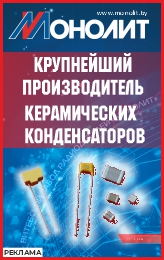Effects of Beam Oscillation on Quality of Laser Metal Deposited Parts
Nowadays, additive technologies are one of the most fast developing methods of obtaining products. The greatest interest is the technology of high-speed direct laser deposition (HSDLD), when a gas powder stream is fed into the laser radiation zone, as a result, a melt pool is formed, and then a layer – after hardening. Thus, it becomes possible to produce three-dimensional products with complex geometry with high productivity.
The modern aircraft engine industry has lots of elements that are more preferable to be manufactured by the HSDLD technology: large-sized products with wall thickness ≥3 mm, material Ti‑6Al‑4V, in particular. In this work, it was found that with Gaussian beam distribution in thin element non-fusion on the edges is formed. These defects are stress concentrators and significantly reduce the mechanical properties of details. The main requirements for these parts are high performance properties, namely pore minimization, absence of cracks and fusions both between the layers and at the edges of the walls, low surface roughness to reduce subsequent machining.
Analyzing the possible solutions helped to find out the necessity of using a wobbler or beam shaper to achieve the required properties. As a result, wobbler was used for the research, because unlike the beam shaper, it has great functionality and the possibility of changing the wall thickness, by changing the scanning amplitude within the deposition process.
The research was carried out with the help of the laser metal deposition robotic complex, based on the fiber laser «LS‑5». The complex also includes a six-axis robot manipulator, a two-axis positioner and a sealed chamber with a 6 m3 volume. The working tool is the laser welding head D30 Wobble Module of IPG Company with a three-jet nozzle.
As a result of this work, optimal parameters (laser power, velocity of process, spot size, scanning amplitude) were determine to produce a thin wall with a minimum amount of defects (absence of cracks, non–fusion in the center and at the edges of the walls) and a low roughness (Rmax ≈ 40 μ, Ra ≈ 8 μ).
Keywords: additive technologies, high-speed direct laser deposition, beam oscillation, wobbler, roughness
Nowadays, additive technologies are one of the most fast developing methods of obtaining products. The greatest interest is the technology of high-speed direct laser deposition (HSDLD), when a gas powder stream is fed into the laser radiation zone, as a result, a melt pool is formed, and then a layer – after hardening. Thus, it becomes possible to produce three-dimensional products with complex geometry with high productivity.
The modern aircraft engine industry has lots of elements that are more preferable to be manufactured by the HSDLD technology: large-sized products with wall thickness ≥3 mm, material Ti‑6Al‑4V, in particular. In this work, it was found that with Gaussian beam distribution in thin element non-fusion on the edges is formed. These defects are stress concentrators and significantly reduce the mechanical properties of details. The main requirements for these parts are high performance properties, namely pore minimization, absence of cracks and fusions both between the layers and at the edges of the walls, low surface roughness to reduce subsequent machining.
Analyzing the possible solutions helped to find out the necessity of using a wobbler or beam shaper to achieve the required properties. As a result, wobbler was used for the research, because unlike the beam shaper, it has great functionality and the possibility of changing the wall thickness, by changing the scanning amplitude within the deposition process.
The research was carried out with the help of the laser metal deposition robotic complex, based on the fiber laser «LS‑5». The complex also includes a six-axis robot manipulator, a two-axis positioner and a sealed chamber with a 6 m3 volume. The working tool is the laser welding head D30 Wobble Module of IPG Company with a three-jet nozzle.
As a result of this work, optimal parameters (laser power, velocity of process, spot size, scanning amplitude) were determine to produce a thin wall with a minimum amount of defects (absence of cracks, non–fusion in the center and at the edges of the walls) and a low roughness (Rmax ≈ 40 μ, Ra ≈ 8 μ).
Keywords: additive technologies, high-speed direct laser deposition, beam oscillation, wobbler, roughness

 rus
rus TS_pub
TS_pub technospheramag
technospheramag technospheramag
technospheramag ТЕХНОСФЕРА_РИЦ
ТЕХНОСФЕРА_РИЦ


